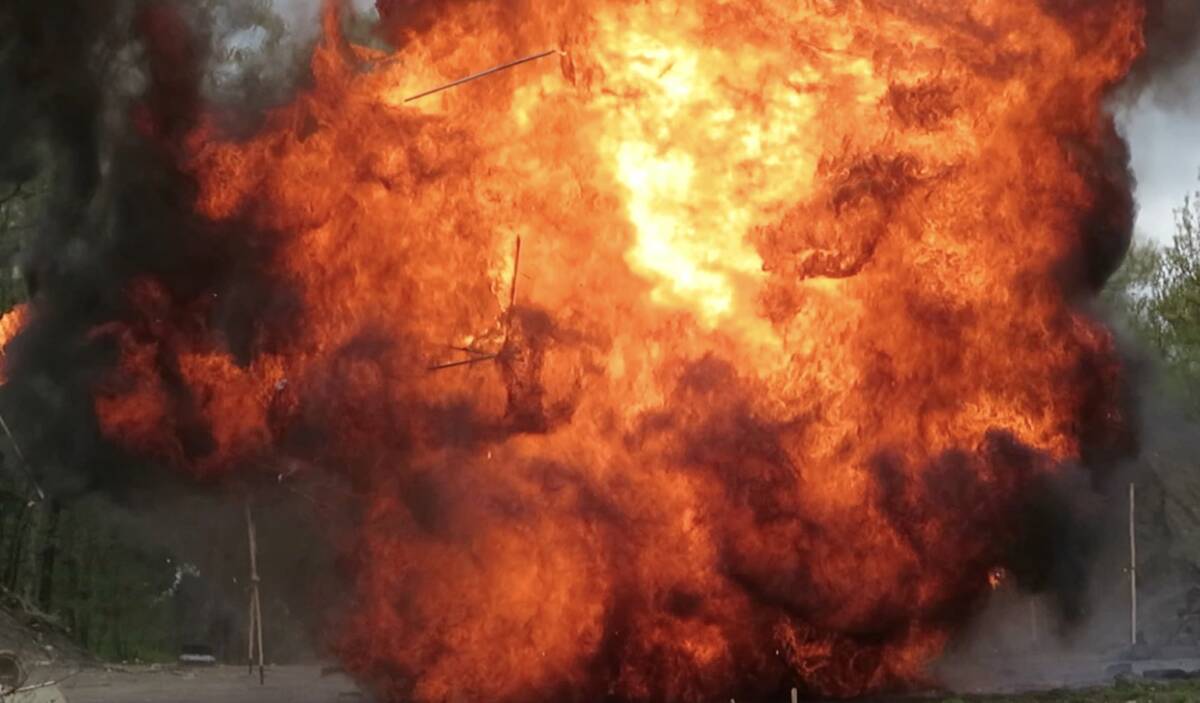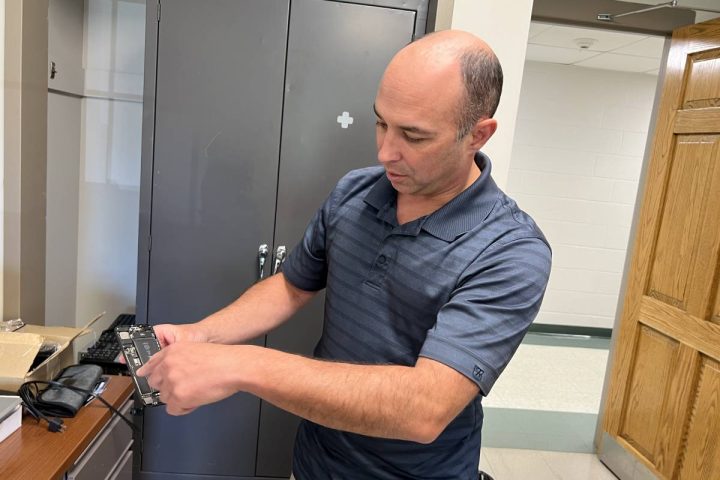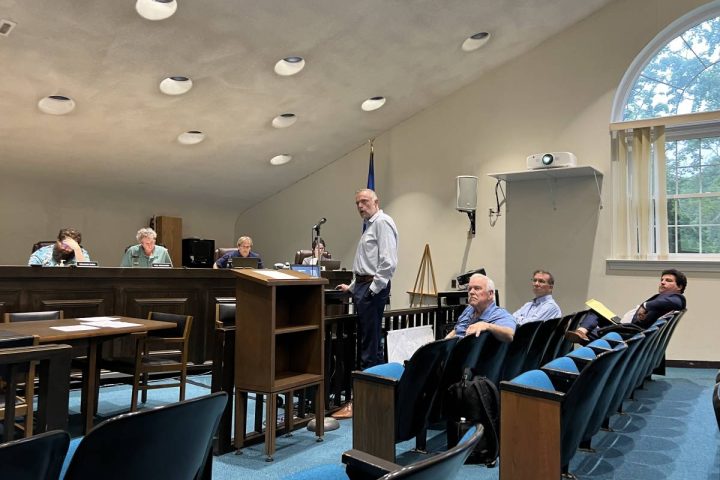First responders from around the region walked up the winding dirt road in the Garder Road Landfill to see a demonstration on explosives late Thursday morning. Beneath a green tent, orange spools were stacked up on a table. From the spools, yellow detonating cords led to explosives further up the hill.
FBI Special Agent Curtis Hampton, who is a bomb technician, led the demonstration with help from fellow technician, FBI Special Agent Steve Ryczer.
On Wednesday and Thursday classroom sessions taught by the FBI and Connecticut State Police bomb squads were held at the Monroe Firehouse on Shelton Road, before the students, including area police and other first responders, drove to the landfill for a live demonstration.
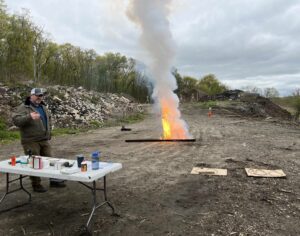
“It’s a program that provides exposure to law enforcement, first responders and the chemical industry,” Hampton said, adding it promotes a chemical awareness as it applies to explosives.
Hampton thanked the town of Monroe, Fire Marshal William “Bill” Davin and the Stepney Volunteer Fire Department for helping make the event possible.
Among the crowd of close to 30 spectators Thursday were police officers from Norwalk, Stamford and Greenwich, and Monroe Volunteer Emergency Medical Service personnel.
Ryczer gave a safety briefing, explaining how the explosions would have a blast pressure phase and a thermal phase with fragmentation. To limit these effects, safety glasses and ear plugs were available.
“Fire and EMS is here,” Ryczer said. “If you guys start feeling faint and sick, let us know. We have EMS on site.”
Hampton stood behind a table covered with household products criminals use to make explosives.
“Every explosion starts with heat,” he said, before showing how bombers and arsonists create fuses that give them time to get away safely before an explosion goes off.
One example was a hobby fuse, a wire he displayed on a piece of cardboard. Lit from one end, it takes time for the spark to burn toward the other end, where the explosive would be. A military fuse is similar, but the wire is inside a plastic tube, so one cannot see the spark as it burns toward the other end.
From the table, Hampton showed the potency of mixing chemicals “that don’t like each other”, making it combustable. Among the combinations was a mixture of potassium chlorate with petroleum jelly to make “a poor man’s C4”.
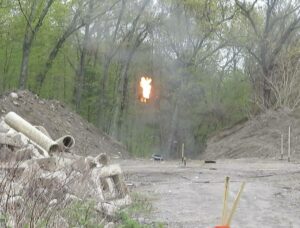
During the explosives demonstration, one detonation split a piece of wood in two, and a mailbox and chicken (not a live one) were blown to smithereens.
One massive explosion produced an enormous orange and yellow ball of fire. “That’s why they call it ‘the Hollywood,'” Hampton said of the nickname.
The agents set off binary explosives, which include mixtures of chemicals that, by themselves are not explosive, and used cast boosters.
The final explosion used shock waves going up and going down to propel two tires high into the air. Hampton said the top tire was filled with gasoline, sparking a flame observers could see to follow its rise and descent.
All respectful comments with the commenter’s first and last name are welcome.

